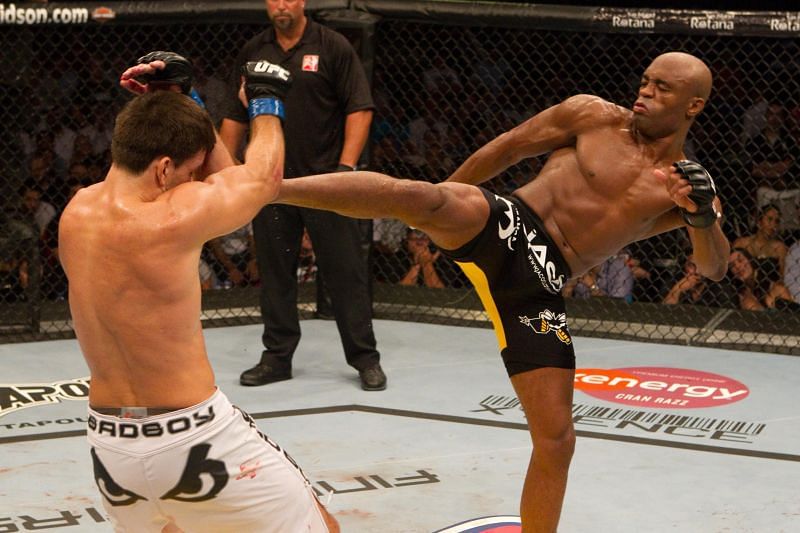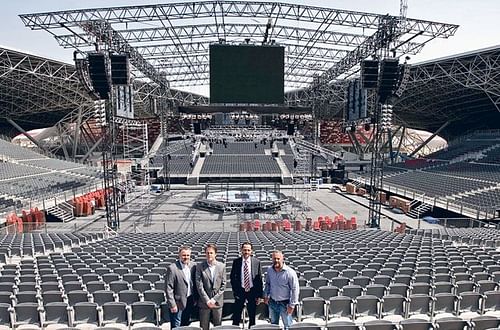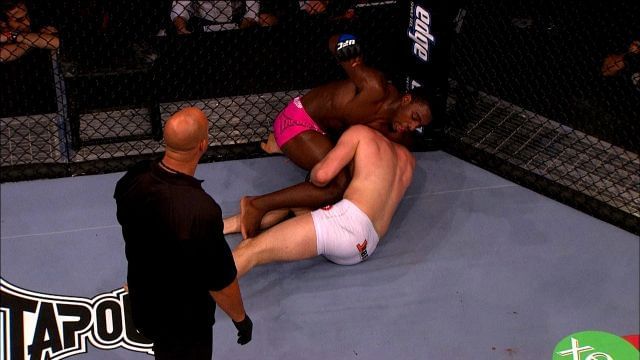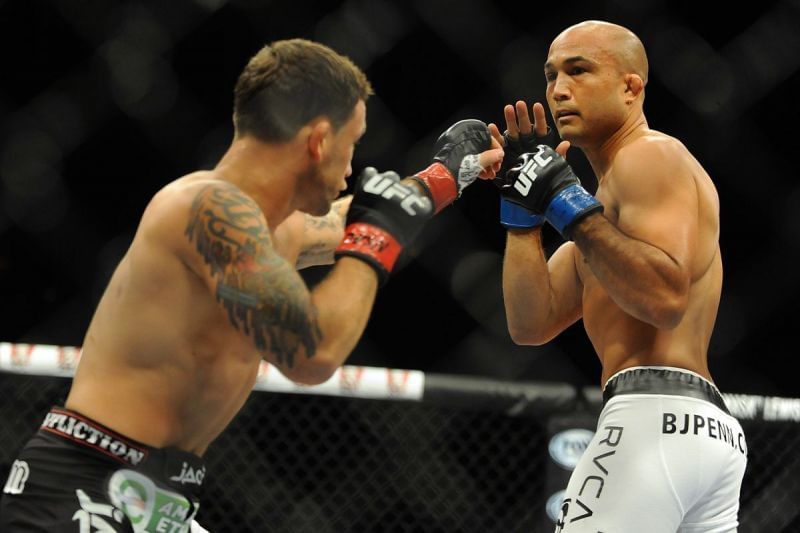
UFC 112 a decade on: A retrospective look at one of the UFC's worst-ever shows
The UFC has had plenty of ups and downs over the years. And, for as many tremendous shows they’ve put on, they’ve also had plenty of forgettable ones too.
However, outright bad UFC shows tend to be few and far between – and when they do happen, it’s hard for fans to forget them.
One such bad show happened just over a decade ago. 10th April 2010 saw the promotion travel to Abu Dhabi for the first time for UFC 112. Just months before the show, the Abu Dhabi government-owned Flash Entertainment had purchased a 10% stake in the UFC’s parent company Zuffa. And, this was the first time that the promotion had really looked to branch out into the Middle East.
The venue for the show? Yas Island’s Ferrari World theme park, at a temporary venue torn down the following week, named the Concert Arena. And not only would the show be the UFC’s first in the Middle East – but it’d also be their first in an outdoor, open-air setting.
Not that the open-air would provide any respite for the fighters. The average temperature in Abu Dhabi during April is 34°, and 10th April 2010 was no different. This would be an entirely unique show for the UFC, and so the line-up was fascinating too.

One of the hallmarks of the UFC’s expansion into international territory has been the promotion’s use of fighters hailing from the area being visited. But that wasn’t the case at UFC 112. With no UFC-level fighters coming out of Abu Dhabi, the card had an eclectic mix of nationalities on show - 11 Americans, 4 Brazilians, 1 Swede and 4 from the UK. But this wasn’t your regular, weak international card.
Today’s UFC pay-per-views retain their numbers – UFC 249 was due to be the promotion’s next effort before the COVID-19 pandemic. But back in 2010, the shows were still given catchy subtitles. UFC 112 was no different and was entitled ‘Invincible’.
The reason for this? At the time, the UFC’s five champions indeed seemed invincible. Two of them – Middleweight champ Anderson Silva and Lightweight champ BJ Penn – were booked at the top of the card, facing challengers Demian Maia and Frankie Edgar respectively. On the other hand, a third major fight was also on tap in the form of a clash between legends Matt Hughes and Renzo Gracie.
And so at approximately 3 pm EST, the first UFC fight to take place in Abu Dhabi began. This was of course in the years prior to preliminary fights being televised. As a result, no television viewers actually saw the slow-paced, dull Heavyweight clash between Jon Madsen and Mostapha Al-Turk that ended with TUF veteran Madsen winning a unanimous decision.
Thankfully for the fans in attendance, the opener was the only dull fight on the preliminary card. Paul Kelly – a Liverpool native who would later be jailed for heroin trafficking – defeated Matt Veach with a second-round guillotine choke. Damarques Johnson TKO’d Brad Blackburn, Rick Story edged a controversial decision over Nick Osipczak.
And finally, Phil Davis won a battle of the UFC’s hottest Light-Heavyweight prospects, defeating future title challenger Alexander Gustafsson with an anaconda choke.

Finally, at approximately 6 pm EST, it was time for the pay-per-view to begin. Things kicked off with a Middleweight clash between former NCAA Division 1 wrestling champion Mark Munoz and TUF 3 Kendall Grove. The two men would go on to produce perhaps 2010’s best opening fight.
An electric first round saw Grove catch Munoz with an uppercut as ‘The Filipino Wrecking Machine’ came forward. Munoz somehow survived but soon found himself caught in a deep guillotine choke, only to survive that too. When ‘Da Spyder’ hit Munoz with a huge knee as he dived in for a takedown early in the second round, the fight appeared to be over.
Again though, Munoz survived and soon found himself in a top position, where he opened up with some brutal ground-and-pound. This turned the fight around entirely until the referee stepped in. The clash was unsurprisingly awarded the Fight of the Night, and both men went onto win a $75k bonus.
Next up, a Lightweight match pitted the UK’s Terry Etim – who was on a four-fight win streak – against future UFC champion Rafael Dos Anjos. Another entertaining fight ended with the Brazilian snapping Etim’s streak with a beautiful armbar. Like Munoz and Grove, ‘RDA’ earned himself an extra $75k.
For the fans watching, a tantalizing thought came to mind. After the opening two fights had been this good, if the trio of big fights could live up to the hype, UFC 112 could end up being an all-time great.
Unfortunately, that thought was wrong.
Renzo Gracie vs. Matt Hughes was next. Despite both men clearly being past their primes, many people were still looking forward to the clash. Hughes hadn’t fought in almost a year but had defeated Matt Serra in his previous fight. And, while Gracie just turned 43 and hadn’t fought since 2007, it was still cool to see a pioneer of MMA stepping into the Octagon for the first time.
There was also an added storyline. Hughes had defeated Renzo’s cousin Royce in 2006, and so this was a chance for the Gracie family to gain a measure of revenge.
Rather than an intensely personal clash though, the fight resembled a slow-paced sparring match. Neither man had been known for their striking in their primes. Both were fearsome grapplers, but here they were, putting on a kickboxing match. And not a good one either. By the latter part of the second round, the crowd were openly booing both men.
The third round saw a little more action. Hughes’ leg kicks began to hurt Gracie, and once he was softened up, the former Welterweight kingpin opened up with his boxing game to take a TKO. Despite the finish, the fight was still completely forgettable.
Still, Penn and Silva were to come and so there was still a chance that the show could be one of the best of 2010, if not the classic everyone had hoped for.
Penn’s fight with Edgar was supposed to be the very definition of a routine title defense. Sure, Edgar was on a three-fight win streak and had only ever lost a single fight in his career But realistically, nothing he’d done in the Octagon suggested he could beat the champion.
At this stage, ‘The Prodigy’ appeared to be unbeatable at 155lbs. After years of criticism that he wasn’t taking his career seriously, something had clicked for him in 2007. He’d dropped back to Lightweight and destroyed everyone in his path, beating Sean Sherk in 2008 to become the UFC’s undisputed champion.
A brief return to Welterweight didn’t end well as he lost to Georges St-Pierre in an unsuccessful title challenge. But, he’d since come back to 155lbs and throttled Kenny Florian and Diego Sanchez – both of whom would’ve been favored over Edgar at the time.
The fight turned out to be anything but routine for the Hawaiian. In the early rounds, he appeared to be comfortable, hitting Edgar with his jab and not really taking much damage in return. But by the midway point, it was clear that something wasn’t quite right with him. And ‘The Answer’ wasn’t going away, buzzing around the champion like an annoying fly that Penn simply couldn’t swat.
Still, when the final buzzer sounded, it felt like Penn had probably done enough to take a decision. Somehow though, the judges awarded the fight – and the title – to Edgar, with one judge giving him all five rounds, a completely ridiculous call by anyone’s standards.

It felt hard to believe, but one of the ‘invincible’ champions had fallen. And more to the point, the fight had been a slog to watch, too. Suddenly, nobody was thinking about UFC 112 being a classic show anymore; instead, it was down to Anderson Silva to save the night entirely.
If anyone could do it, it was the Middleweight champion. At the time, ‘The Spider’ was widely considered the best pound-for-pound fighter in the world. He was 10-0 in the UFC and the fight with Maia was to be his 6th straight title defense.
Sure, he’d put on a couple of stinkers - the dull defenses against Patrick Cote and Thales Leites come to mind immediately. But the last time he’d fought, he’d looked like MMA’s answer to Muhammad Ali when he knocked out former Light-Heavyweight champ Forrest Griffin with strikes that appeared to have come from The Matrix.
Maia, for his part, wasn’t technically the top contender in the division. In fact, he was actually #4 at the time. But Vitor Belfort and Chael Sonnen were both injured while Nate Marquardt – who’d knocked out Maia in August 2009 – was coming off a loss to Sonnen two months earlier. Maia had at least beaten Dan Miller.
Still, the fact that the challenger was a grappling expert who didn’t have the greatest takedowns and was at a disadvantage from an athletic standpoint meant that surely, this was a routine defense for Silva. But after watching Penn lose? There was a definite feeling that anything could be possible.
After the first round, that feeling was completely erased. Maia simply looked lost in the Octagon, mesmerized by Silva’s crazy movement and hand-waving, and a number of big strikes landed for the champion. The stanza ended with ‘The Spider’ miming that he was playing the guitar, and it felt like Maia was basically on borrowed time.
The same followed in the second round. This time Silva channeled boxing legend ‘Prince’ Naseem Hamed, dropping his hands and verbally taunting the cowering Maia to hit him. Which, of course, he was completely incapable of doing. But despite landing plenty of clean shots, things began to get weird. It felt like Silva was so much better than Maia that he’d simply decided to give up.
If the first two rounds had seen some of the best of Silva, the following three were definitely an example of his worse side. He danced around. He taunted Maia. He dropped his hands. But more than anything, he seemed content to simply stay out of any danger while sniping at the challenger on the odd occasion. By the fifth round, even referee Dan Miragliotta had enough, warning ‘The Spider’ for inactivity.
By the time the fight ended, the crowd had turned on Silva entirely. Not that they were cheering for Maia. Instead, chants of “GSP!” rang around the arena in support of the UFC’s Welterweight champion, the rival to Silva’s claim as the world’s best fighter.
Everyone had come to witness a virtuoso performance from Silva and instead they’d been given something far more abstract. It was like expecting The Sixth Sense and instead receiving The Village. This was surely the worst UFC title fight of all time to that point, and if it wasn’t, well, it certainly felt like it on that night.
The show ended in a unique way, too. UFC President Dana White, thoroughly disgusted with Silva’s performance, refused to present him with his title belt – leaving the job to his manager Ed Soares. White would later outright suggest that should Silva perform in such a way again, he’d strip him of his title and fire him from the UFC.
Of course, that would never happen. The truth was that despite Silva’s antics, at this point his fights had become an “event” and he was beginning to establish himself as one of the promotion’s top drawing cards. UFC 112, for instance, drew 500,000 buys on pay-per-view, a solid total by anyone’s standards at the time.
White also promised that due to the event ending so badly, he’d “make it up” to the UFC fans in some way. That never truly materialized either. The word at the time was that the airing of UFC 122 for free on Spike TV (in the US) was the promotion’s apology, but then that event ended up being even worse than UFC 112 and so Dana’s promise was quietly swept under the rug.
And so the UFC’s first show in Abu Dhabi was over. The promotion has since returned there twice - once for a forgettable Fight Night card in 2014 and once in 2019 for UFC 242.
UFC 242 was a decent show but one which also blended into every other modern UFC show, as most of them do these days.
UFC 112, for all its flaws, at least felt unique. Rewatching it today, it still gives that rare feeling that this was history unfolding. In some ways, even though it stands as one of the worst UFC pay-per-views of all time, it remains infinitely more memorable than the majority of the promotion’s efforts since their real chokehold on the MMA industry began in 2013.